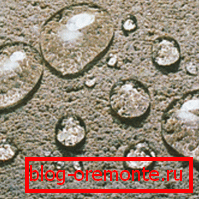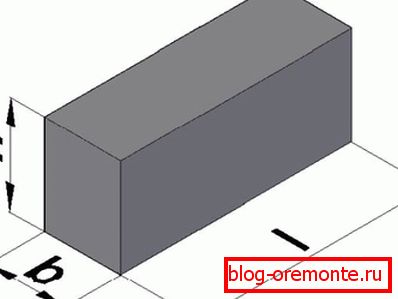Concrete stop for plumbing
At the device of city pressure water supply and sewage systems, concrete stops must be used. These products are special rectangular or trapezoidal blocks of different sizes. In this article we will consider in more detail the area of their application, the main characteristics, features and types.

Purpose stubborn
As a result of the internal pressure of water, certain forces arise in the pressure pipes. On flat sections, they practically have no effect on the walls of pipes, as they are directed along their axis, but on some nodes of the network they can create significant pressure on which pipes are not designed.
These sites include:
- Turns of the aqueduct;
- Branches sites;
- Pipe joints;
- Stub dead ends.
To compensate for these forces and transfer them to the ground, they use concrete stops on the water pipe. It is especially important to use them for large diameter pipes, where the forces acting on the joints or other nodes can be quite substantial.

Most often used horizontal stops, which are needed for almost every outdoor urban water supply. Their use additionally protects the system from changes.
In addition, they are needed in pipelines for the following reasons:
- Ensure the integrity of the water supply system;
- Prevent damage to socket and socket joints;
- Increase the durability of the entire system.
Note! Undesirable is the use of blocks in peat and loose soils.
Thrust blocks are used for the following types of water supply:
- Cast iron;
- Plastic;
- Reinforced concrete;
- Asbestos cement.
Features of concrete stops
Specifications
As mentioned above, the stops can have a trapezoidal or rectangular shape. The type of form is selected depending on the diameter of the pipes.

Make products from concrete compressive strength B10. Since they do not experience serious stress, there is no need to use a material with high compressive strength. Due to this, the price of blocks is not high.
However, due to the operating conditions, the concrete must have the following characteristics:
- Moisture resistant - due to the fact that the stops are constantly exposed to the environment.
- Wear and crack resistance - this parameter is very important as a result of mechanical action of the pipe on the stop.
- Frost resistance - the product will have to undergo numerous cycles of freezing and thawing.
Therefore, many factories of reinforced concrete products make stops made of modified concrete, which includes plasticizers and other additives that improve the properties of the material.

Choice of brand of an emphasis
It must be said that the parameters of water resistance and frost resistance are set for each project separately.
In addition, the choice of brand is carried out in accordance with factors such as:
- Diameter of water pipes;
- Pipe material;
- Geological conditions of construction;
- Hydraulic pressure in the future water supply.
Types of lugs
In the market of building materials you can find resistant blocks of the following types:
| Блоки УГ | Designed for horizontal turns at an angle from 5 to 90 degrees. |
| Blocks UN | Differ in the presence of a bulge down. Are intended for vertical turns of the sewerage and water supply systems at an angle of 35-90 degrees. |
| Blocks of UV | They are anchor anchors with anchoring and convex upwards. They are used on the pipeline in the area of branching, as well as turns with socket or socket coupling of pipes. |
In addition to the letter index, the product brand also contains the digital designation of the block size, for example, the stop of the UN 29 is a trapezoid block with a bulge down. His dina is 600 mm, and height - 500 mm. Designed such a unit for vertical turns of the water supply.
The digital index can be deciphered using the tables given in the series 3.001.1-3.
Note! When installing blocks, the groundwater level should be located at least one meter below the level of the base of the block. Also, the instruction allows their use in water-saturated soils.

Choice of stops
When choosing concrete lugs with your own hands, you need to pay attention to the following points:
- The presence of cracks with a thickness of more than 0.2 mm. In this case, the unit is not suitable for use.
- The presence of bare reinforcement, as well as a large number of shells and chips. In this case, the use of the product is also prohibited.
- The surface of the block should be dense and smooth, in this case the friction force with the pipe decreases. This will increase the life of both the product and the pipeline.
Note! When transporting blocks it is necessary to use linings and gaskets so as not to damage them. In addition, it is prohibited to perform unloading by dropping.
Here, perhaps, all the points that you need to know about the stops when installing water supply systems or sewage systems.
Conclusion
Concrete stops in some cases are an indispensable part of the water supply, which significantly increases the service life of the system. It should be noted that this element will be able to fully cope with the tasks assigned to it only if the product brand is chosen correctly. Therefore, when choosing stops, it is necessary to consider all the above factors.
From the video in this article, you can get more information on this topic.